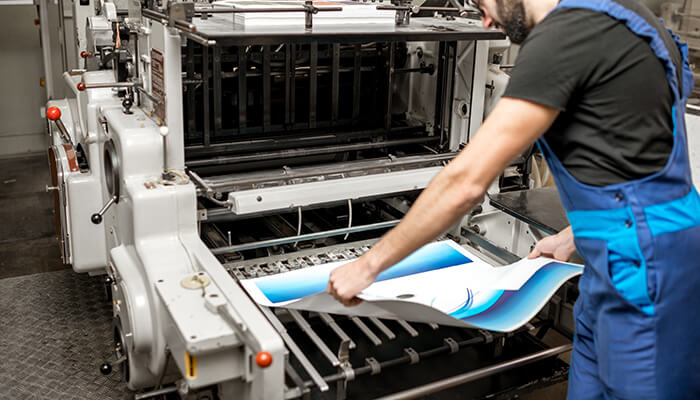Sublimation and UV printers are popular among businesses that require high-quality print output. These printers have many advantages, including fast printing speeds, vivid colors, and superior durability. However, when these printers develop a problem or malfunction, it can lead to costly downtime. Troubleshooting problems with your printer can be frustrating if you don’t know what causes the issue.
In this blog post, we will discuss some tips and tricks to troubleshoot common issues found in sublimation and UV printers.
1. Difficulty Printing on Specific Substrates
The most common issue with sublimation printing is the difficulty in printing onto specific substrates like fabrics, ceramics, etc. Some materials might not be suitable for ink transfer through heat or pressure, such as polyester wood products, etc. Thus, if prints aren’t taking to certain fabric types or surfaces, try a different type of substrate where subtle adjustments may need to be made depending on each application.
2. Clogged Nozzles
Clogged nozzles occur when dust particles, but more likely, residual ink blockage occurs within printhead nozzles, causing inconsistent color tonality up to the catastrophic loss of gamut, rendering practically unusable images produced instead of uniform tone quality throughout the image. This deprives the printed documents of achieving their full potential because, ultimately, back flashing may be required after manually cleaning jets. If you find yourself in such a situation, spray using liquid solvent provided by the manufacturer, which tends to lower cost than changing cartridges entirely altogether, risking bigger headaches. So, good routine maintenance goes far here since, most often, owners wait until they’ve noticed a significant decline before taking action. Regular cleanings scheduled at regular intervals allow owners to preemptively head off clogging issues, significantly reducing cost & headaches in troubleshooting production lines long-term.
3. Blurred Output
Blurring occurs when there are connectivity issues between one piece (print) and another during different stages (e.g., prepress, DTP layouts.). So, double-check that all elements (pixels, images, and text) are prepped to the correct resolution with sharpness appropriate for substrate quality level. If softer edges or more refined details within art are required, choose between two possibilities. One is increasing ink absorption in your media by either using a higher density of black ink or coated substrates capable of higher bond absorption. The other option is using better software editors like Adobe, which allow subtle additional manipulations to remove blur caused by marginal size discrepancies active during the stylus drawing phase.
4. Misaligned Prints
Prints that come out misaligned can be challenging because they waste time & resources. Alignment problems typically occur when there’s a malfunction with feeder rollers guiding paper through the system correctly. In addition, make sure the artwork design file dimensions match up properly before uploading it into the printer and are well positioned prior to printing. Problems also occur if printhead calibration is not quite up to standard, requiring initial (first print run) adjustments. In order to prevent such issues, it is always advisable to use quality print heads.
5. Color Accuracy Problems
Color accuracy problems remain the primary points of concern when troubleshooting printing issues. No matter how much you spend on high-quality printers and substrates, improper mixes lead to huge inaccuracies, making the final printed product appear different from the desired output result. This problem is caused by color profile mismatches while exchanging files between physical machine hardware converted digital inputs. Also, the imperative component entails utilizing secured ICC profiles wholly tailored to the company’s specific devices. Create ICC (International Color Consortium) values inside using production purposes; however, avoid low-quality generic choices as they often cause imprecise coloring ranging from light purple shading aqua blue, green tone instead of red violet, true brown, etc. Adequate lighting must present areas where serial printing should occur. Having fluorescent bulbs brightens space printer operation happens with enough visibility, dedicated detailed viewing, and comfortable working conditions.
6. Mechanical Error Message Displayed On Printer Screen
When a mechanical error message has been generated, preventive measures are unsure if this issue is a one-time glitch affecting cooling fans’ damp cloth swiping dust regularly. Nowadays, almost all manufacturers have provided service applications downloadable online sites connecting directly to each unit produced, giving immediate updates on operational features such as firmware upgrades and troubleshooting mechanisms already integrated within them. Thereby overcoming issues without aspiring technical understanding in real-time.
Summary
Troubleshooting targeted between sublimation and UV printers involves primarily the basic steps towards proactive upkeep maintenance of devices themselves. Primarily focus on routine cleanings, checking substrates, and calibrating printheads to deliver fluidity through medium printing. Try techniques like initial print adjustment focusing on balanced color preparation using available software tools, enabling optimal results and reducing adjustments required at the final stage. Post-maintenance procedures revive worn-out rollers and swap any malfunctioning parts with replacement kits, alerting manufacturers of issues online. Well, performing troubleshooting steps undoubtedly guarantees excellent long-term service of the printer device.



